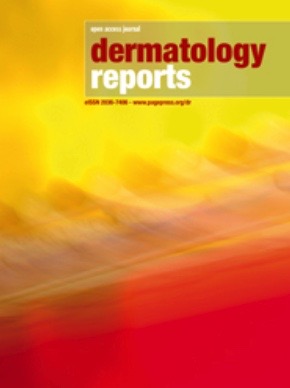Public Health Report: Tuberculosis Case Management in Avery County, N.C.
1.0 Executive Summary
This report details the public health response initiated by the Toe River Health District following the identification of an active case of tuberculosis (TB) in Newland, N.C. The response, conducted in partnership with state and local educational authorities, focuses on containment, contact tracing, and treatment, directly aligning with key United Nations Sustainable Development Goals (SDGs), particularly SDG 3 (Good Health and Well-being).
2.0 Incident Overview and Response
The Toe River Health District has confirmed and isolated an individual with active tuberculosis. A comprehensive investigation has led to the identification of over 100 individuals who may have been in close contact with the patient. The response protocol includes:
- Direct communication with all potential contacts by public health nurses from the Toe River Health District and the Avery County School System.
- Proactive testing and screening for individuals identified as being at risk of exposure.
- Implementation of treatment protocols for any individuals found to be infected, with the goal of preventing the development of active TB disease.
3.0 Alignment with Sustainable Development Goal 3: Good Health and Well-being
The actions undertaken by the health district are a direct contribution to achieving SDG 3: Good Health and Well-being. Specifically, this initiative addresses:
- Target 3.3: End Communicable Diseases. The primary objective of this public health intervention is to combat the spread of tuberculosis, a key target under SDG 3. By identifying, isolating, and treating cases, the health district is working to end the epidemic of TB within the community.
- Target 3.8: Achieve Universal Health Coverage. The provision of testing, information, and treatment demonstrates a commitment to ensuring all community members, including vulnerable populations within the school system, have access to essential health services. Early detection and treatment are nearly 100% effective, underscoring the importance of accessible healthcare in achieving positive health outcomes.
4.0 Collaborative Efforts and Broader SDG Implications
The response highlights a multi-stakeholder approach, which is fundamental to SDG 17: Partnerships for the Goals. The collaboration between the Toe River Health District, the North Carolina Department of Health and Human Services, and the Avery County School System exemplifies an effective partnership to protect public health.
This partnership also supports SDG 4: Quality Education by ensuring that the learning environment within the Avery County School System remains safe and healthy, allowing for the continuation of education without disruption from public health threats.
As stated by Toe River Health District Director F.M. Gardner, “Identifying illnesses, protecting the public and working to contain this exposure is our top priority. We will continue to test those at risk and protect the public.” This commitment reinforces the community’s resilience, a core component of SDG 11: Sustainable Cities and Communities.
5.0 Clinical Information: Tuberculosis Symptoms
Active TB is a disease that primarily affects the lungs. Key indicators include:
- A persistent cough lasting more than three weeks
- Coughing up blood
- Fever
- Profuse night sweats
- Unintentional weight loss
- Poor appetite
- Chest pain or discomfort
- Difficulty breathing
Note: According to health officials, individuals who have not been directly contacted by a nurse from the Toe River Health District or the Avery County School System do not currently require testing.
6.0 Public Inquiry Contact Information
For further information or specific concerns regarding this public health matter, the Toe River Health District has established a dedicated hotline.
- TB Information Hotline: 828-737-6068
1. Which SDGs are addressed or connected to the issues highlighted in the article?
-
SDG 3: Good Health and Well-being
The article focuses entirely on a public health issue: the identification, containment, and treatment of a tuberculosis (TB) case. The actions of the Toe River Health District, such as isolating the infected individual, contact tracing, offering testing, and providing information, are all direct efforts to ensure the health and well-being of the community by preventing the spread of a communicable disease.
2. What specific targets under those SDGs can be identified based on the article’s content?
-
Target 3.3: End the epidemics of communicable diseases
The article directly addresses this target by describing the public health response to an active case of tuberculosis, a major communicable disease. The statement, “Identifying illnesses, protecting the public and working to contain this exposure is our top priority,” shows a clear effort to combat and control the spread of TB, which is essential to ending its epidemic.
-
Target 3.d: Strengthen capacity for early warning, risk reduction, and management of health risks
The coordinated response detailed in the article is a practical example of this target. The Toe River Health District, in collaboration with the state’s Department of Health and the local school system, is actively engaged in risk reduction and management. Actions like identifying and contacting over 100 potential exposures, isolating the active case, and setting up a public information hotline demonstrate a robust capacity to manage a local health risk and provide early warning to the community.
-
Target 3.8: Achieve universal health coverage and access to quality essential health-care services
The article implies progress toward this target by describing the provision of essential health services. The health district is ensuring that all individuals who may have been exposed are contacted by a nurse, offered testing, and informed about treatment options. The text states that “people who are sick with TB disease can be treated with medicines and cured almost 100 percent of the time,” indicating that access to effective treatment is a key part of the public health response.
3. Are there any indicators mentioned or implied in the article that can be used to measure progress towards the identified targets?
-
Indicator 3.3.2: Tuberculosis incidence per 100,000 population
While the article does not provide a specific incidence rate, it reports on the fundamental actions required to control and reduce this indicator. By identifying “an individual with active TB” and implementing containment measures for “more than 100 people who may have had close contact,” the health authorities are working directly to prevent new cases, which would lower the TB incidence rate in the population.
-
Indicator 3.d.1: International Health Regulations (IHR) capacity and health emergency preparedness
The article serves as a case study of this indicator in action at a local level. The existence of a coordinated system involving the health district, state public health division, and school system to investigate and manage a disease outbreak is a direct measure of health emergency preparedness. The rapid contact tracing, isolation protocols, and public communication (hotline) are all components of IHR capacity.
-
Indicator 3.8.1: Coverage of essential health services
The services described in the article—contact tracing by a “public health nurse,” availability of testing (“you do not need to be tested” unless contacted), and access to treatment (“can be treated with medicines and cured”)—are all examples of essential health services. The effort to reach “all people who may have had close contact” implies a commitment to ensuring coverage for the at-risk population, which is a qualitative measure of this indicator.
4. Create a table with three columns titled ‘SDGs, Targets and Indicators’ to present the findings from analyzing the article.
| SDGs | Targets | Indicators |
|---|---|---|
| SDG 3: Good Health and Well-being | Target 3.3: By 2030, end the epidemics of AIDS, tuberculosis, malaria and neglected tropical diseases and combat hepatitis, water-borne diseases and other communicable diseases. | Indicator 3.3.2: Tuberculosis incidence per 100,000 population. (Implied through the identification and containment of an active TB case to prevent new infections). |
| SDG 3: Good Health and Well-being | Target 3.d: Strengthen the capacity of all countries… for early warning, risk reduction and management of national and global health risks. | Indicator 3.d.1: International Health Regulations (IHR) capacity and health emergency preparedness. (Demonstrated by the coordinated response of the health district, state DPH, and school system in contact tracing, isolation, and public communication). |
| SDG 3: Good Health and Well-being | Target 3.8: Achieve universal health coverage, including… access to quality essential health-care services… | Indicator 3.8.1: Coverage of essential health services. (Implied by the provision of services like contact tracing by nurses, testing for at-risk individuals, and access to curative medicine for TB). |
Source: wataugaonline.com







